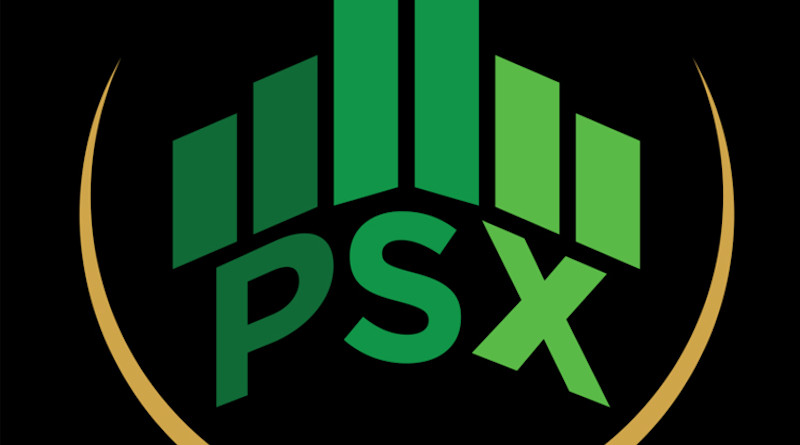Pakistan Stock Exchange Benchmark Index Closes Flat For 3Q2022
The Pakistan Stock Exchange benchmark index for 3Q2022 declined 1% after falling 8% in 2Q2022. The index has now recovered 3% from its 2022 low of 39,831 touched on July 21, 2022.
This was on the back of revival of IMF program and expectations of increased foreign flows. To recall, the IMF Executive Board approved release of US$1.1 billion tranche under the Extended Fund Facility (EFF).
In US dollar terms, the index was down 11% in 3Q2022 due to currency depreciation. Lately, intense monsoon season and flash flooding severely impacted Agricultural crops and has caused damage to infrastructure which has raised concerns over Agricultural outlook and increase in imports.
According to Bloomberg, Pakistan was neither amongst the top nor the worst performers during the quarter. Sri-Lankan market was up 33%, Argentina up 33%, Laos up 30% were the best performing markets during the quarter under review. As against this, Poland was down 27%, Ghana down 25%, and Hong Kong down 23% were the worst performing markets.
During 3Q2022, average daily traded volumes in the Cash and Ready market declined by 47%YoY, while it dropped by 12%QoQ to 218 million shares. The average daily traded value plunged 50%YoY and 4%QoQ to Rs7.0 billion.
The average daily traded volume in the Futures market also declined by 39%YoY and 14% QoQ to 91 million shares. The average traded value declined by 47%YoY, while up 6%QoQ to Rs3.6 billion.
Insurance sector was top seller during the quarter with net selling of US$40 million followed by Mutual Funds (US$25 million and Foreign Corporates (US$14 million). On other hand, Individuals (US$25 million), Companies (US$13 million), and Brokers (US$8 million).
Key sectors that underperformed market during the quarter included Cable & Electrical, Automobile Assemblers, and Tobacco. However, sectors that outperformed were Technology, Transport, and Cements.
Foreign inflows and debt relief
Pakistan foreign exchange reserves have remained under severe pressure recently and remain under 1.5 months of import cover. With Pakistan external financing requirements (debt repayment & current account deficit) of over US$32 billion, there are concerns whether Pakistan will be able to meet its financing needs or not.
However, with the recent floods and the damage it has caused to human lives and infrastructure, there are expectations for debt relief and flood assistance. UN Secretary-General Antonio Guterres recently suggested global financial institution to give Pakistan debt swaps where the relief on debt repayment is diverted towards addressing climate changes.
Asian Development Bank (ADB) also has recently stated that it is envisioning providing Pakistan financing of US$2 billion to help country fight from devastation of floods.
Along with this, demand for debt relief from Bi-lateral/Multi-lateral sources including debt relief from Paris Club is been made which could provide some respite to the depleting reserves of the country.
Pakistan has total outstanding debt of US$9.2 billion from Paris Club and a scheduled debt servicing of US$1.2 billion in FY23. Any debt relief or rescheduling of Paris Club debt and expected foreign flows from ADB, friendly countries and other multi-lateral agencies will remain the key in determining outlook of the market.
IMF stance on floods and relaxation
Given the severity of floods, Pakistan faces a big challenge in achieving stringent external account and fiscal account targets set with IMF for FY23. It will be interesting to see if IMF provides any relaxations in its next review scheduled in November. A few newspaper quoted that IMF has agreed to give relaxation on increase in taxes on petroleum products and Fuel Charges Adjustment on power tariffs till 3-months.
Commodity Prices
Outlook on Pakistan economy will also be dependent upon commodity price trend going forward. International Arab Light oil prices have been down by 15% during the quarter, the fears of global recession has led to expectations of further drop. Oil imports continue to constitute over 30% of Pakistan’s oil import bill as sustained reduction in crude oil and product prices could lower pressures on import bill and could also curb rising inflation.
New Finance Minister
Ishaq Dar has recently been appointed as Finance Minister replacing Miftah Ismail. Ishaq Dar recently stated that his focus would be on addressing issue of speculation in currency market as he termed Pak Rupee as undervalued. He also vowed to tame down inflation and interest rates.
Since Sep 23, 2022, Rupee has gained against US$ in anticipation of the steps he will take to bring down the exchange parity. Petrol/Diesel prices were also cut, though marginally for the next 15-days, beginning October 01, 2022.

